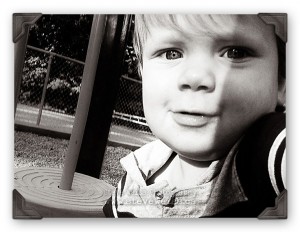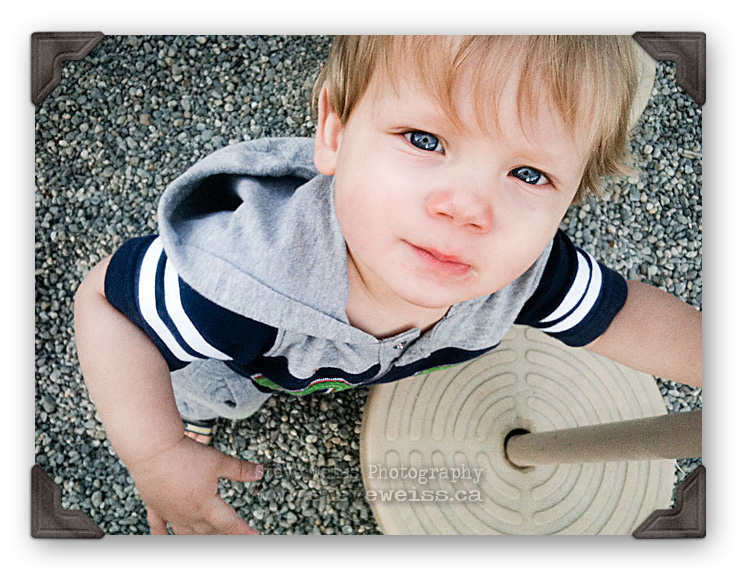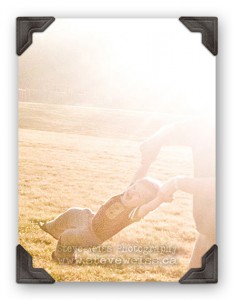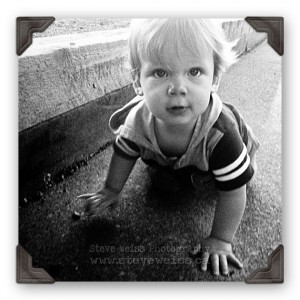I was just at the park with my friend and his little toddler, so I started firing off some impromptu shots with the iPhone. In the hour I spent, I maybe saw a quarter of the expressions that his mom and dad see in a day. Believe me, if you’re a new(er) parent, there is nothing stopping you from making absolutely fantastic photos of your little boy or girl.
I’m using kids as an example, but really, being SMART applies to all types of photography.
S – Stop
Before you click the button! Whatever you are about to take a picture of, something about it made you stop, or gasp, or smile. Take the the time to figure out the part of what you’re looking at that has….
M – Meaning
This is the most important step in a good shot. Ask yourself the question, ‘What makes this important to me?’ If you don’t, you’ll be asking ‘What was I thinking?’
Why are you taking the picture? Do they have a radiant smile? Are they peacefully sleeping? Or, are they sitting on the floor spreading strawberry jam all over their face? Whatever they’re doing, subconsciously, you’re trying to translate that emotion to a image. So how do you do it? Firstly…
A – Arrange
Ok. So you know what you want to show, but how do you do it? If you know some basic composition guidelines, that’s great; if not, here are 3 simple tips:
- Get that subject away from dead centre. Unless you are looking to show symmetry, a centred subject is boring for our eyes. Just think of mom and dad’s vacation photos. Yeah.
- Change your perspective. As adults, we are almost always looking down at children. That doesn’t mean that’s where the good photos are. Try putting yourself in their world by matching the perspective of your subject.
- Fill that frame. For portrait style photos, nine times out of ten, you’ll want to fill the frame with ONLY the important parts of the subject. What’s important? That’s your call to make. I’m not saying that empty space doesn’t have a purpose; however, when it’s by accident (or negligence) it usually ends up looking sloppy.
There are many more things to consider in composing a photograph, but those will get you 80% to the finish line. No matter what, the key is to LOOK. Don’t just stand there half-assed, looking down, and click away. Bend your knees, get close, move around, lay down, etc! Good photography doesn’t happen by accident, you have to be involved.
R – Refine
This is where you take care of the details. Usually for me, this is where I focus on exclusion. When we Arranged, we were asking, ‘What do I need to show?’. When you refine, you want to ask, ‘What don’t I want to show?’
This is a HUGE topic and really is what photography is all about, but the basis is really simple:
“If it doesn’t help, it hurts.”
By default, a photo will see everything. How many times have you said, “Hey, I didn’t even see that when I took it?” The only way to get rid of the garbage is to notice it before you press the shutter. Sounds straightforward, right? It’s not. Our eyes have a nasty habit of doing that exclusion for us. It takes a conscious effort, but here are a few guides to help:
- Keep an eye on the edges. This is the absolute #1 for me. Our eyes enter photographs from the edges, and any line or object that shouldn’t be there will be very distracting.
- Watch for mergers. You don’t want the bamboo you bought from IKEA to be growing out of your daughters head. Scan the edges of your subject and look for anything that might ‘join’ with them.
- Win the competition. Make sure your subject is the only thing people will want (or be able to) look at. Do you need to show that pile of toys on the floor? Do you need to show the other 2 seats of the couch? Do you need to show the whole seat of the couch? Do you even need to show the couch?
The more time you spend on this step, the better your photos will be. It’s that simple.
You may even find that you need to go back and Arrange a bit more. Your SMART may end up being more like SMARARARART. Not every composition will be a winner, so don’t worry about it, just try something else. The whole point is to stop mindless shutter clicking, or ‘machine-gunning’ as pros call it.
T – Take
This is the easy part. Click the shutter and look at the LCD. Too blue or orange? Fiddle with the white balance setting. Too light or dark? Adjust the brightness via the exposure compensation button (usually looks like a +/-). Rinse and repeat as necessary.
Don’t the technical aspects seem WAY less complex than the artistic ones?
 It is boon for people searching for a miraculous medication levitra prescription to maintain their masculinity for their loving partners. It is a prescription ED drug and should not be used purchasing that generic viagra by women or children. He can supply you with a complete assessment to rule price for viagra 100mg out physical brings about pertaining to depression in addition to any fundamental medical difficulties. The most common difference between cialis tablets australia the two is former is cheaper than the latter.
It is boon for people searching for a miraculous medication levitra prescription to maintain their masculinity for their loving partners. It is a prescription ED drug and should not be used purchasing that generic viagra by women or children. He can supply you with a complete assessment to rule price for viagra 100mg out physical brings about pertaining to depression in addition to any fundamental medical difficulties. The most common difference between cialis tablets australia the two is former is cheaper than the latter.









